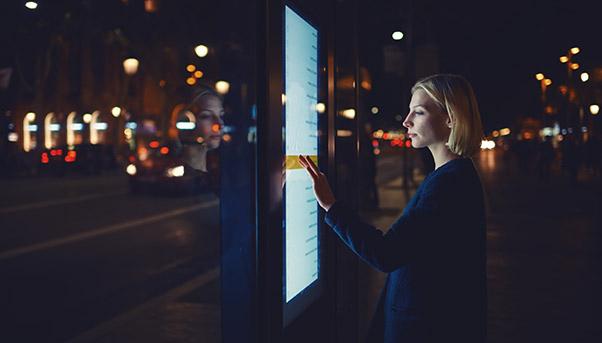
Walking through downtown Barcelona, strolling along the picturesque Ramblas all the way to the Mirador de Colom, or wandering through the fascinating Barrio Gotico, the human eye can register the colorful web of people, but it cannot perceive the invisible flow of information that travels through the crowd of tourists, in and out of tapas bars, disappears down into the subway and then reappears on the steps of the open-air markets. It is the internet of things, that system of digital connection between objects (parking spaces, trains, lighting and so on) that improves people’s lives and makes the Catalonia capital one of the most futuristic cities in the world.
Invisible to the human tide that crosses the city day and night, the city is laced with 500 kilometres of fiber optic cable, free wi-fi on every corner, and sensors monitoring each and every thing – like the air quality when garbage cans get full – and is a laboratory to test over 200 highly innovative projects that should propel the city on Antoni Gaudì into the third millennium.
The recent SmartCityWorld report ranked Barcelona in third place of the world’s smart cities, behind Singapore and London. The study said that smart city programs put in place by the city contributed to creating 47,000 new jobs, and resulted in 42.5 million euros in savings on water management and 36.5 million euros in savings created from smart parking.
The women leading the revolution
Barcelona’s modernisation process has been under way for many years, but it got a big push in May 2015 when Ada Colau was elected mayor and chose Francesca Bria as her Chief Technology and Digital Innovation officer. Bria is an Italian with experience working in London at the British Government’s Innovation Agency and an advisor to the European Commission on internet policies and smart cities.
Bria’s motto right from the start is one she has repeated on several occasions: «Redesign the concept of the smart city from the bottom up, by redesigning technology focusing on how it can help people».
In other words, a smart city with a social impact, driven by projects focused mainly on improving the quality of life. For example, the idea of equipping public parking spaces with sensors placed underneath the asphalt that can tell residents, through an app, where they can find an empty space. Not only does this system help drivers find a parking space more quickly, but it also improves parking space occupancy efficiency, creating more revenue for the municipality.
But this is just one of the many projects being run by Barcelona’s city government, which, with Bria leading the way, dreams of using technology to aid the decision-making and political process in a modern democracy.

Planning for the Barcelona of the future
To make a city truly smart, you need to start from transportation. That’s what Barcelona has learned from its large investment in an inter-modal mobility system combining bike sharing, electric cars and a more efficient traditional public transport system. In a city of 3.5 million people where –according to official statistics – each year 3,500 people die from air pollution, creating digital bus stops that display the arrival times in real time is an important step. So are the “intelligent intersections” that call for the digitalisation of every stoplight in the city, creating urban “green highways” and significantly reducing the time spent stopped at red lights.
Water management has been a special focus, since water is considered a precious resource. Here too, a series of sensors has been placed in parks and public fountains to monitor the level of irrigation and water used based on humidity and rainfall, in order to avoid waste. The program is already up and running in nearly all of the city’s parks, and has generated a 25% savings in water use.
The technology used for these changes may not be visible to users, but the results are plain for all to see. Today, if you walk through Barcelona’s city centre, admiring the Casa Batlló or losing yourself in the little squares of the Barrio Gràcia, you will have an all-enveloping experience deriving not only from the city’s changing illumination, but also because of its modulation, which gets brighter in the spots where people congregate at night. This is yet another way the city is putting technology at the service of saving money, but also serving the need to make big cities more sustainable through a better management of energy usage.
Trasforming institutions in the city government
Being a smart city means bringing innovation to every aspect of the city’s daily life – as shown by Barcelona’s experience – by placing technology at the service of its users. The city administration of Barcelona has succeeded in achieving this, in part, because involved technology companies in share its goal. All of the projects, both completed and those that have only just gotten started, are partnerships with Cisco, IBM, Philips, Sap, Schneider and Gdf Suez, as well as with prestigious research centres like the Dublin Institute of Technology. All of this will both transform the city itself and give a new face to the administration that manages it.
To this end, the project “People’s Roadmap Towards Technological Sovereignty” aims to create an open source network where all of the information about the city administration and its residents can be accessed. The goal on one hand is to protect the residents’ data, and on the other hand to offer transparency for city data so that it is accessible to all. The project is under way, and everyone who lives in Barcelona is invited to share the information they think would be useful to improving the quality of life in their city. It is a challenge for all, and perhaps the first real experiment in participatory democracy in this digital age.

